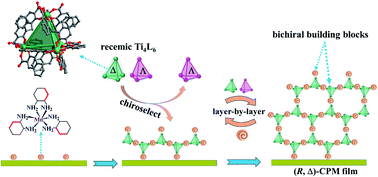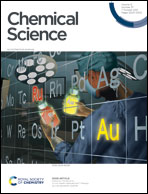Surface chiroselective assembly of enantiopure crystalline porous films containing bichiral building blocks†
Abstract
The development of chiral crystalline porous materials (CPMs) containing multiple chiral building blocks plays an important role in chiral chemistry and applications but is a challenging task. Herein, we report the first example of bichiral building block based enantiopure CPM films containing metal–organic cages (MOCs) and metal complexes. The functionalized substrate was immersed subsequently into homochiral metal complex (R)- or (S)-Mn(DCH)3 (DCH = 1,2-diaminocyclohexane) and racemic Ti4L6 cage (L = embonate) solutions by a layer-by-layer growth method. During the assembly process, the substrate surface coordinated with (R)- or (S)-Mn(DCH)3 can, respectively, layer-by-layer chiroselectively connect Δ- or Λ-Ti4L6 cages to form homochiral (R, Δ)- or (S, Λ)-CPM films with a preferred [111] growth orientation, tunable thickness and homogeneous surface. The resulting enantiopure CPM films show strong chirality, photoluminescence, and circularly polarized luminescence (CPL) properties as well as good enantioselective adsorption toward enantiomers of 2-butanol and methyl-lactate. The present in situ surface chiroselective strategy opens a new route to assemble homochiral CPM films containing multiple chiral building blocks for chiral applications.



 Please wait while we load your content...
Please wait while we load your content...